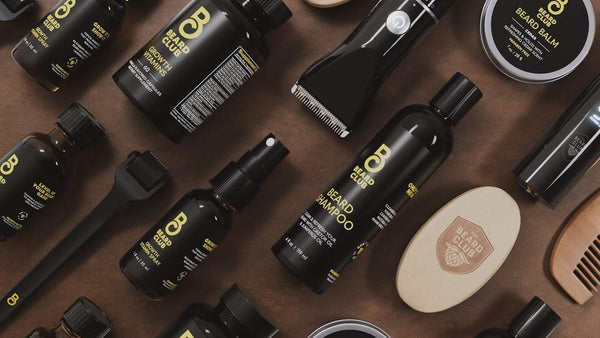How to Run Ads for Your Shopify Store: A Comprehensive Guide
Table of Contents
- Introduction
- Understanding the Importance of Ads for Your Shopify Store
- Step 1: Setting Up Your Shopify Store
- Step 2: Defining Your Target Audience
- Step 3: Choosing Advertising Platforms
- Step 4: Creating Compelling Ad Content
- Step 5: Setting a Budget
- Step 6: Choosing Ad Placement and Type
- Step 7: Tracking Conversions Regularly
- Step 8: Optimizing for Conversions
- Step 9: Monitoring and Analyzing Performance
- Step 10: Using A/B Testing
- Step 11: Scaling Successful Campaigns
- Conclusion
- FAQs
Introduction
Did you know that nearly 80% of customers conduct online research before making a purchase? For ecommerce brands, efficiently running ads for a Shopify store is not just a marketing tactic; it’s a vital component of business strategy that can significantly impact visibility and sales. As we navigate the increasingly competitive digital marketplace, understanding how to effectively run ads is more important than ever.
In this blog post, we will delve into the essential steps and strategies for running successful advertising campaigns tailored for your Shopify store. By the end of this guide, you will have a clear roadmap on how to leverage various advertising platforms, optimize your ad content, and track your results to ensure a strong return on investment.
We will cover aspects such as defining your target audience, selecting the right advertising channels, creating compelling ad content, and utilizing data-driven strategies to enhance your campaign performance. Let’s embark on this journey to elevate your Shopify store’s advertising efforts and drive meaningful engagement.
Understanding the Importance of Ads for Your Shopify Store
Why Run Ads?
Running ads for your Shopify store can be a game changer. Ads help you reach potential customers who are actively searching for products like yours. They can enhance brand awareness, drive traffic to your site, and ultimately increase conversions.
Key Benefits of Running Ads:
- Increased Visibility: Ads place your products in front of a larger audience, ensuring that your brand gains more exposure.
- Targeted Marketing: You can reach specific demographics based on interests, behaviors, and location, maximizing your marketing efforts.
- Measurable Results: Advertising platforms provide extensive analytics, allowing you to track performance and make data-driven decisions.
Factors to Consider Before Implementing Ads
Before diving into ad campaigns, it’s crucial to consider various factors:
- Budget: Determine how much you can afford to spend on advertising, including daily limits and overall campaign budgets.
- Target Audience: Understand who your ideal customers are to tailor your messaging and targeting effectively.
- Advertising Goals: Define what success looks like for your ad campaigns. Is it increasing traffic, generating sales, or building brand awareness?
By carefully considering these elements, we can set the stage for a successful advertising journey.
Step 1: Setting Up Your Shopify Store
Before you can run effective ads, you need a well-optimized Shopify store that provides an excellent user experience. Here’s how to ensure your store is ready for advertising:
Optimize Your Store
- User-Friendly Design: Ensure your store has a clean, modern design that reflects your brand. An intuitive navigation structure is key.
- Mobile Optimization: With increasing traffic coming from mobile devices, ensure your store is mobile-friendly to capture this audience.
- Fast Loading Times: A slow website can deter customers. Optimize images and minimize code to improve loading speeds.
- Secure Payment Options: Provide multiple secure payment options to build trust and reduce cart abandonment rates.
With your Shopify store optimized, we can now transition to the next critical step: defining our target audience.
Step 2: Defining Your Target Audience
Understanding who your customers are is paramount to running successful ads. Here’s how to identify and define your target audience:
Steps to Identify Your Audience
- Analyze Existing Customers: Look at your current customer base to identify common demographics, interests, and shopping behaviors.
- Create Customer Personas: Develop detailed profiles that represent your ideal customers, including age, gender, interests, and purchasing motivations.
- Utilize Analytics Tools: Use tools like Google Analytics and Shopify’s built-in analytics to gather insights about visitor behavior on your site.
Engaging with Your Audience
Once you have a clear understanding of your target audience, tailor your ad content to resonate with their needs and preferences. Consider their pain points and how your products can provide solutions.
Step 3: Choosing Advertising Platforms
Selecting the right advertising platforms is crucial for ensuring your ads reach the right audience. Here are some popular options to consider:
Key Advertising Platforms for Shopify Stores
- Google Ads: Ideal for capturing intent-driven traffic. Use search ads to reach customers actively searching for products you offer.
- Facebook Ads: With detailed targeting options, Facebook allows you to reach specific demographics and interests. Utilize carousel ads to showcase multiple products.
- Instagram Ads: Leveraging visually appealing content, Instagram is perfect for brands with strong visual products. Use stories and shoppable posts to drive traffic.
- Pinterest Ads: Great for lifestyle brands, Pinterest ads can help users discover products in an inspirational context.
- TikTok Ads: With its rapidly growing user base, TikTok can be a powerful platform to reach younger audiences through engaging video content.
By carefully choosing the right platforms, we can enhance our Shopify store’s visibility and drive meaningful results.
Step 4: Creating Compelling Ad Content
The success of your advertising campaign largely hinges on the quality of your ad content. Here are some tips for creating engaging and persuasive ads:
Tips for Crafting Effective Ad Content
- Focus on Benefits: Highlight how your product solves a problem or improves the customer’s life, rather than just listing features.
- Use High-Quality Visuals: Invest in professional product photography or graphics that capture attention and reflect your brand’s identity.
- Incorporate Strong Calls-to-Action: Encourage users to take action with clear and compelling CTAs, such as “Shop Now” or “Get 20% Off Today.”
- Leverage User-Generated Content: Showcase customer reviews and testimonials to build trust and authenticity.
Regularly analyze your ad performance to refine and improve your content based on what resonates best with your audience.
Step 5: Setting a Budget
Establishing a well-defined budget for your advertising campaigns is essential for optimizing expenditures and maximizing returns. Here’s how to effectively set your advertising budget:
Steps to Determine Your Advertising Budget
- Assess Overall Marketing Budget: Determine what portion of your overall marketing budget can be allocated to advertising.
- Consider Customer Acquisition Cost (CAC): Understand how much you can afford to spend to acquire a new customer based on your profit margins.
- Test and Adjust: Start with a manageable budget, monitor performance, and adjust based on which campaigns yield the best ROI.
By carefully managing your budget, we can ensure that your advertising efforts remain sustainable and effective.
Step 6: Choosing Ad Placement and Type
Choosing the right ad placements and types can significantly impact your campaign’s success. Here are some strategies to consider:
Ad Placement Strategies
- Search Ads: These appear on search engine results pages when users search for specific keywords. They are effective for capturing high-intent customers.
- Social Media Ads: Tailor your ads for placements on platforms like Facebook, Instagram, and TikTok. Consider where your audience spends their time.
- Display Ads: Use visually appealing banners on websites that your target audience visits to increase brand awareness.
Types of Ads to Explore
- Image Ads: Simple, effective, and visually engaging.
- Video Ads: Great for storytelling and showcasing products in action.
- Carousel Ads: Allow you to display multiple products in a single ad, enticing users to explore more.
Continuously analyze placement performance data to optimize and focus your efforts on the most successful channels and formats.
Step 7: Tracking Conversions Regularly
Tracking conversions is vital for assessing the effectiveness of your advertising campaigns. Here’s how to implement effective conversion tracking:
Steps for Effective Conversion Tracking
- Use Shopify Analytics: Leverage Shopify’s built-in analytics to track visitor behavior and sales conversions from ads.
- Set Up Google Analytics: Link your Shopify store with Google Analytics to gain deeper insights into user behavior, traffic sources, and conversion rates.
- Define Conversion Goals: Clearly outline what actions you want users to take (e.g., purchases, sign-ups) and monitor these metrics closely.
Regularly reviewing conversion data will help us adjust our strategies to maximize results.
Step 8: Optimizing for Conversions
To convert ad impressions into meaningful actions, we need to implement optimization strategies effectively. Here’s how to do it:
Optimization Techniques
- A/B Testing: Experiment with different ad formats, messaging, and visuals to see what resonates best with your audience.
- Retargeting: Use retargeting ads to re-engage users who have previously interacted with your store but did not convert.
- Landing Page Optimization: Ensure that the landing pages your ads direct to are optimized for conversions, with clear CTAs and streamlined checkout processes.
By continuously optimizing for conversions, we can enhance our overall campaign performance.
Step 9: Monitoring and Analyzing Performance
Continuous evaluation of key performance metrics is critical for successful advertising campaigns. Here’s how to effectively monitor and analyze your ad performance:
Key Metrics to Track
- Click-Through Rate (CTR): Measures how often people click on your ads. A higher CTR indicates effective ad content.
- Conversion Rate: The percentage of users who complete a desired action after clicking on your ad. This is a direct measure of ad effectiveness.
- Cost Per Acquisition (CPA): Understanding how much you spend to acquire a new customer helps you gauge the efficiency of your ad spend.
Regularly assess these metrics to identify trends and make informed decisions for future campaigns.
Step 10: Using A/B Testing
A/B testing is a powerful method for optimizing ad performance. Here’s how to effectively implement A/B testing:
Steps for A/B Testing
- Identify Variables to Test: Choose elements to test, such as images, headlines, or CTAs.
- Run Tests Simultaneously: Ensure both versions of the ad run at the same time to get accurate comparisons.
- Analyze Results: After a sufficient testing period, analyze which version performed better and implement the insights into your future campaigns.
A/B testing allows us to refine our strategies continually, maximizing the effectiveness of our ads.
Step 11: Scaling Successful Campaigns
Once we’ve identified successful ad campaigns, scaling them effectively can lead to even greater success. Here’s how to do it:
Steps to Scale Campaigns
- Increase Budget Gradually: If a campaign is performing well, consider gradually increasing the budget to reach a wider audience.
- Expand Targeting: Explore new demographics or geographic areas to broaden your reach.
- Analyze and Adjust: Continuously monitor performance as you scale to ensure that the increased budget is yielding positive results.
By scaling effectively, we can amplify successful strategies and maximize our advertising impact.
Conclusion
Running ads for your Shopify store is an essential strategy for driving traffic, increasing conversions, and boosting sales. Throughout this guide, we have explored the critical steps involved in setting up successful advertising campaigns, from defining your target audience to optimizing for conversions and scaling your efforts.
As we move forward, consider how you can leverage the insights gained from this post to elevate your Shopify store’s advertising strategy. If you’re looking for more comprehensive support in streamlining your ecommerce operations and enhancing your digital presence, we invite you to explore the PowerCommerce eStore Suite. Let us empower your ecommerce journey with cutting-edge solutions that drive conversion and fuel sustainable growth.
FAQs
1. What is the best platform for running ads for my Shopify store? The best platform depends on your target audience and product type. Google Ads is great for intent-driven traffic, while Facebook and Instagram are ideal for visual products.
2. How much should I spend on ads for my Shopify store? It depends on your overall marketing budget and customer acquisition costs. Start with a manageable budget and adjust based on performance.
3. How can I track the success of my ad campaigns? Utilize Shopify analytics and Google Analytics to monitor key metrics like click-through rates, conversion rates, and cost per acquisition.
4. What types of ads work best for Shopify stores? Image ads, video ads, and carousel ads are effective formats. Experiment with different types to see what resonates best with your audience.
5. How often should I optimize my ad campaigns? Regularly monitor performance metrics and optimize campaigns based on insights. A/B testing should be an ongoing process to maximize ad effectiveness.
POWER your ecommerce with our weekly insights and updates!
Stay aligned on what's happening in the commerce world
Email Address
Handpicked for You
21 March 2025 / Blog
How to Use Shopify Themes: A Comprehensive Guide for E-commerce Success
Read more21 March 2025 / Blog
How to Find SKU on DSers: A Comprehensive Guide for E-commerce Professionals
Read more21 March 2025 / Blog


